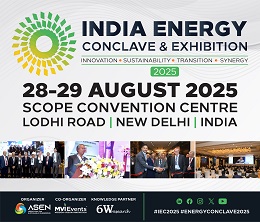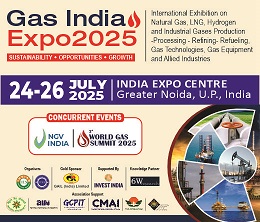Indonesia Industrial Hose Market (2025-2031) | Size, Outlook, Analysis, Forecast, Value, Companies, Industry, Trends, Revenue, Share & Growth
Market Forecast By Material (Natural Rubber, Nitrile Rubber, PVC, Silicone, Polyurethane, Others (EPDM, UPE)), By Media Type (Water, Oil, Hot Water and Steam, Air and Gas, Food, and Beverage, Chemical), By Industry (Automotive, Infrastructure, Oil & Gas, Pharmaceuticals, Food & Beverages, Water & Wastewater, Others) And Competitive Landscape
| Product Code: ETC359668 | Publication Date: Aug 2022 | Updated Date: Aug 2025 | Product Type: Market Research Report | |
| Publisher: 6Wresearch | No. of Pages: 75 | No. of Figures: 35 | No. of Tables: 20 | |
Indonesia Industrial Hose Market Highlights
| Report Name | Indonesia Industrial Hose Market |
| Forecast period | 2025-2031 |
| CAGR | 7.1% |
| Growing Sector | Oil and Gas |
Topics Covered in the Indonesia Industrial Hose Market Report
The Indonesia industrial hose market report thoroughly covers the market by material, by media type, and by industry. The report provides an unbiased and detailed analysis of the on-going market trends, opportunities/high growth areas, and market drivers which would help the stakeholders to devise and align their market strategies according to the current and future market dynamics.
Indonesia Industrial Hose Market Synopsis
The Indonesia industrial hose market is growing, driven by enlarged demand from a wide range of industries such as automotive, construction, chemicals, oil and gas, food and beverage, and manufacturing. Industrial hoses are crucial for the transportation of fluids, gases, and materials in various applications, and their versatility and durability make them indispensable in heavy-duty environments. The market is also benefiting from advancements in hose technology, with innovations such as high-pressure resistant hoses and those designed for specialized applications, including food-grade and chemical-resistant hoses. The demand for industrial hoses is further supported by the ongoing industrial automation and infrastructure development across the country.
However, challenges such as fluctuating raw material prices, supply chain disruptions, and competition from alternative materials may slightly hinder market growth. Despite these challenges, the market is expected to continue expanding as industries increasingly rely on efficient, durable hose systems to meet their operational needs.
According to 6Wresearch, the Indonesia Industrial Hose market size is projected to grow at a CAGR of 7.1% during 2025-2031. The growth of the Indonesia industrial hose market is stimulated by the mounting demand across multiple industries, including construction, automotive, oil and gas, chemicals, and food processing. The expansion of infrastructure projects, coupled with the growing need for fluid transfer systems in manufacturing processes, supports the continuous demand for industrial hoses. Technological advancements, such as the development of high-pressure, heat-resistant, and chemically resistant hoses, are also contributing to market growth by catering to more specialized and demanding applications.
Additionally, the shift towards automation and increased production capacities in various sectors further boosts the need for reliable hose systems. However, challenges such as fluctuating raw material prices, particularly rubber and steel, can impact production costs and pricing strategies. Supply chain disruptions, especially in the wake of global events, pose another challenge, affecting timely delivery and availability of hoses. Furthermore, competition from alternative materials, like plastic and metal, and the increasing preference for long-lasting, maintenance-free hoses may hinder the growth of traditional rubber-based hoses in certain applications.
Indonesia Industrial Hose Market Trends
- Technological Advancements in Hose Materials – Development of high-performance materials such as thermoplastic, synthetic rubber, and composite hoses to improve durability, flexibility, and resistance to extreme conditions like high pressure, temperature, and chemicals.
- Shift Towards Customization – Increasing demand for customized industrial hoses designed for specific applications, such as food-grade hoses, chemical-resistant hoses, and anti-static hoses, to meet the evolving needs of industries.
- Growing Focus on Sustainability – Adoption of eco-friendly materials and sustainable manufacturing processes as industries and companies prioritize environmental responsibility, reducing their carbon footprints.
- Expansion of Oil and Gas Industry – The continued expansion of oil and gas exploration, along with the growth in hydraulic fracturing (fracking), is driving the demand for robust and durable hoses designed to handle high-pressure fluid transfer.
Investment Opportunities in the Indonesia Industrial Hose Market
- Expansion of Manufacturing Facilities – Investing in the establishment of new or upgraded manufacturing facilities to cater to the growing demand for industrial hoses, particularly those with advanced features such as high-pressure resistance or chemical resistance.
- Development of Custom Hose Solutions – Providing customized industrial hoses designed for niche applications, such as food-grade hoses, pharmaceutical-grade hoses, and hoses for specific chemical or temperature conditions, which are seeing increased demand.
- Sustainable Product Innovation – Investing in the development of environmentally friendly industrial hoses made from recycled or eco-friendly materials, which is an emerging trend in response to growing sustainability concerns.
- Technology Integration in Hose Production – Capitalizing on advancements in manufacturing technologies like automation, robotics, and 3D printing to streamline production processes, reduce costs, and improve product quality.
Key Players in the Indonesia Industrial Hose Market
Key companies in the Indonesia industrial hose market include major players such as Eaton Corporation, Continental AG, Parker Hannifin, and Gates Corporation, which are known for their extensive range of high-quality industrial hoses used in various sectors including automotive, oil and gas, construction, and chemicals. Other notable companies include Goodyear Tire & Rubber Company, which offers a wide selection of durable hoses, and Techfluid, which specializes in high-performance hoses for specialized industries.
Additionally, manufacturers like Flexible Technologies, Kuriyama of America, and Master Hose & Fittings provide competitive offerings, often focusing on niche markets such as food-grade, chemical-resistant, and high-pressure hoses. Additionally, some of these players hold majority of the Indonesia Industrial Hose market share. Moreover, these companies are actively innovating with advanced hose materials, enhancing production capabilities, and expanding their product portfolios to cater to the growing and diverse demands of industries.
Government Regulations in the Indonesia Industrial Hose Market
The Indonesia industrial hoses and fittings market is projected to experience significant growth from 2024 to 2030, driven by key industries such as mining, construction, oil and gas, automotive, pharmaceutical, and food and beverages. To ensure product quality and safety, the Indonesian government has implemented mandatory enforcement of Indonesian National Standards (SNI) for relevant products. For instance, in July 2022, SNI 122:2022 was published, specifying standards for 15 types of faucet products, including design, quality, and performance requirements. These regulations aim to enhance consumer safety and support the competitiveness of local industries. Further, these initiatives have further boosted the Indonesia Industrial Hose market revenues. Additionally, in 2024, the Ministry of Industry mandated SNI 8022:2022 for thermoplastic elastomer hoses used with liquefied petroleum gas stoves.
Future Insights of the Indonesia Industrial Hose Market
The future of Indonesia industrial hose market looks promising, with continued growth driven by increasing demand from key industries such as oil and gas, construction, automotive, and chemicals. Technological advancements, including the development of high-performance, durable hoses that can withstand extreme conditions, and the integration of smart sensors for real-time monitoring, will shape the market. The push for sustainability will likely drive the adoption of eco-friendly and recyclable hose materials, further expanding the market’s reach.
Additionally, as industrial automation and infrastructure projects continue to grow, the need for specialized, reliable industrial hoses will rise, presenting investment opportunities. However, challenges such as fluctuating raw material costs and competition from alternative materials will require companies to innovate and adapt to changing market dynamics. Overall, the market is expected to maintain a steady upward trajectory with significant opportunities in both product innovation and market expansion.
Nitrile Rubber Category to Dominate the Market- By Material
According to Ravi Bhandari, Research Head, 6Wresearch, the nitrile rubber category in the Indonesia industrial hose market is experiencing strong growth due to its superior resistance to oils, fuels, and chemicals, making it ideal for applications in industries such as automotive, oil and gas, and chemicals. Nitrile rubber hoses are increasingly favored for their durability, flexibility, and ability to withstand harsh operating conditions, particularly in environments where exposure to petroleum-based products and other aggressive chemicals is common.
As industrial sectors expand and require more specialized hoses, the demand for nitrile rubber hoses is projected to rise, driven by the need for reliable and high-performance materials. The growing emphasis on high-quality, resistant materials for fluid transfer systems further supports the continued expansion of nitrile rubber in the market. However, competition from other materials like synthetic rubber may influence its growth, though nitrile's unique benefits position it for sustained demand in targeted industries.
Oil & Gas to Dominate the Market- By Industry
The oil and gas industry is a significant driver of growth in the Indonesia industrial hose market, as the sector continues to expand with increased exploration, production, and transportation activities. The demand for specialized hoses capable of withstanding high-pressure conditions, extreme temperatures, and exposure to harsh chemicals is fueling the market, particularly for hoses used in hydraulic fracturing (fracking), offshore drilling, and refinery operations. Industrial hoses are critical for fluid and gas transfer in various stages of oil and gas production, and as energy demand rises, so does the need for reliable, durable hose solutions. The growth of unconventional oil and gas extraction methods, such as shale oil and natural gas drilling, further boosts the requirement for high-performance hoses that can handle the specific challenges of these operations.
Key Attractiveness of the Report
- 10 Years Market Numbers.
- Historical Data Starting from 2021 to 2024.
- Base Year - 2024.
- Forecast Data until 2031.
- Key Performance Indicators Impacting the Market.
- Major Upcoming Developments and Projects.
Key Highlights of the Report:
- Indonesia Industrial Hose Market Outlook
- Market Size of Indonesia Industrial Hose Market, 2024
- Forecast of Indonesia Industrial Hose Market, 2031
- Indonesia Industrial Hose Revenues & Volume for the Period 2021 - 2031
- Indonesia Industrial Hose Market Trend Evolution
- Indonesia Industrial Hose Market Drivers and Challenges
- Indonesia Industrial Hose Market Price Trends
- Indonesia Industrial Hose Market Porter's Five Forces
- Indonesia Industrial Hose Industry Life Cycle
- Indonesia Industrial Hose Market Revenues & Volume, By Material for the Period 2021 - 2031
- Indonesia Industrial Hose Market Revenues & Volume, By Natural Rubber for the Period 2021 - 2031
- Indonesia Industrial Hose Market Revenues & Volume, By Nitrile Rubber for the Period 2021 - 2031
- Indonesia Industrial Hose Market Revenues & Volume, By PVC for the Period 2021 - 2031
- Indonesia Industrial Hose Market Revenues & Volume, By Silicone for the Period 2021 - 2031
- Indonesia Industrial Hose Market Revenues & Volume, By Polyurethane for the Period 2021 - 2031
- Indonesia Industrial Hose Market Revenues & Volume, By Others (EPDM, UPE) for the Period 2021 - 2031
- Indonesia Industrial Hose Market Revenues & Volume, By Media Type for the Period 2021 - 2031
- Indonesia Industrial Hose Market Revenues & Volume, By Water for the Period 2021 - 2031
- Indonesia Industrial Hose Market Revenues & Volume, By Oil for the Period 2021 - 2031
- Indonesia Industrial Hose Market Revenues & Volume, By Hot Water and Steam for the Period 2021 - 2031
- Indonesia Industrial Hose Market Revenues & Volume, By Air and Gas for the Period 2021 - 2031
- Indonesia Industrial Hose Market Revenues & Volume, By Food and Beverage for the Period 2021 - 2031
- Indonesia Industrial Hose Market Revenues & Volume, By Chemical for the Period 2021 - 2031
- Indonesia Industrial Hose Market Revenues & Volume, By Industry for the Period 2021 - 2031
- Indonesia Industrial Hose Market Revenues & Volume, By Automotive for the Period 2021 - 2031
- Indonesia Industrial Hose Market Revenues & Volume, By Infrastructure for the Period 2021 - 2031
- Indonesia Industrial Hose Market Revenues & Volume, By Oil & Gas for the Period 2021 - 2031
- Indonesia Industrial Hose Market Revenues & Volume, By Pharmaceuticals for the Period 2021 - 2031
- Indonesia Industrial Hose Market Revenues & Volume, By Food & Beverages for the Period 2021 - 2031
- Indonesia Industrial Hose Market Revenues & Volume, By Water & Wastewater for the Period 2021 - 2031
- Indonesia Industrial Hose Market Revenues & Volume, By Others for the Period 2021 - 2031
- Indonesia Industrial Hose Market - Import Export Trade Statistics
- Market Opportunity Assessment, By Material
- Market Opportunity Assessment, By Media Type
- Market Opportunity Assessment, By Industry
- Indonesia Industrial Hose Market - Top Companies Market Share
- Indonesia Industrial Hose Market - Competitive Benchmarking, By Technical and Operational Parameters
- Indonesia Industrial Hose Market - Company Profiles
- Indonesia Industrial Hose Market - Key Strategic Recommendations
Markets Covered
The Indonesia Industrial Hose market report provides a detailed analysis of the following market segments -
By Material
- Natural Rubber
- Nitrile Rubber
- PVC
- Silicone
- Polyurethane
- Others (EPDM, UPE)
By Media Type
- Water
- Oil
- Hot Water and Steam
- Air and Gas
- Food and Beverage
- Chemical
By Industry
- Automotive
- Infrastructure
- Oil & Gas
- Pharmaceuticals
- Food & Beverages
- Water & Wastewater
- Others
Indonesia Industrial Hose Market (2025-2031): FAQs
| 1 Executive Summary |
| 2 Introduction |
| 2.1 Key Highlights of the Report |
| 2.2 Report Description |
| 2.3 Market Scope & Segmentation |
| 2.4 Research Methodology |
| 2.5 Assumptions |
| 3 Indonesia Industrial Hose Market Overview |
| 3.1 Indonesia Country Macro Economic Indicators |
| 3.2 Indonesia Industrial Hose Market Revenues & Volume, 2021 & 2031F |
| 3.3 Indonesia Industrial Hose Market - Industry Life Cycle |
| 3.4 Indonesia Industrial Hose Market - Porter's Five Forces |
| 3.5 Indonesia Industrial Hose Market Revenues & Volume Share, By Material, 2021 & 2031F |
| 3.6 Indonesia Industrial Hose Market Revenues & Volume Share, By Media Type, 2021 & 2031F |
| 3.7 Indonesia Industrial Hose Market Revenues & Volume Share, By Industry, 2021 & 2031F |
| 4 Indonesia Industrial Hose Market Dynamics |
| 4.1 Impact Analysis |
| 4.2 Market Drivers |
| 4.2.1 Rapid industrialization in Indonesia leading to increased demand for industrial hoses |
| 4.2.2 Growing investments in infrastructure projects driving the need for industrial hoses |
| 4.2.3 Adoption of advanced technologies in manufacturing processes boosting demand for high-quality industrial hoses |
| 4.3 Market Restraints |
| 4.3.1 Fluctuating raw material prices impacting the production cost of industrial hoses |
| 4.3.2 Intense competition among market players leading to pricing pressures |
| 4.3.3 Regulatory challenges and compliance requirements affecting the market growth |
| 5 Indonesia Industrial Hose Market Trends |
| 6 Indonesia Industrial Hose Market Segmentations |
| 6.1 Indonesia Industrial Hose Market, By Material |
| 6.1.1 Overview and Analysis |
| 6.1.2 Indonesia Industrial Hose Market Revenues & Volume, By Natural Rubber, 2021-2031F |
| 6.1.3 Indonesia Industrial Hose Market Revenues & Volume, By Nitrile Rubber, 2021-2031F |
| 6.1.4 Indonesia Industrial Hose Market Revenues & Volume, By PVC, 2021-2031F |
| 6.1.5 Indonesia Industrial Hose Market Revenues & Volume, By Silicone, 2021-2031F |
| 6.1.6 Indonesia Industrial Hose Market Revenues & Volume, By Polyurethane, 2021-2031F |
| 6.1.7 Indonesia Industrial Hose Market Revenues & Volume, By Others (EPDM, UPE), 2021-2031F |
| 6.2 Indonesia Industrial Hose Market, By Media Type |
| 6.2.1 Overview and Analysis |
| 6.2.2 Indonesia Industrial Hose Market Revenues & Volume, By Water, 2021-2031F |
| 6.2.3 Indonesia Industrial Hose Market Revenues & Volume, By Oil, 2021-2031F |
| 6.2.4 Indonesia Industrial Hose Market Revenues & Volume, By Hot Water and Steam, 2021-2031F |
| 6.2.5 Indonesia Industrial Hose Market Revenues & Volume, By Air and Gas, 2021-2031F |
| 6.2.6 Indonesia Industrial Hose Market Revenues & Volume, By Food and Beverage, 2021-2031F |
| 6.2.7 Indonesia Industrial Hose Market Revenues & Volume, By Chemical, 2021-2031F |
| 6.3 Indonesia Industrial Hose Market, By Industry |
| 6.3.1 Overview and Analysis |
| 6.3.2 Indonesia Industrial Hose Market Revenues & Volume, By Automotive, 2021-2031F |
| 6.3.3 Indonesia Industrial Hose Market Revenues & Volume, By Infrastructure, 2021-2031F |
| 6.3.4 Indonesia Industrial Hose Market Revenues & Volume, By Oil & Gas, 2021-2031F |
| 6.3.5 Indonesia Industrial Hose Market Revenues & Volume, By Pharmaceuticals, 2021-2031F |
| 6.3.6 Indonesia Industrial Hose Market Revenues & Volume, By Food & Beverages, 2021-2031F |
| 6.3.7 Indonesia Industrial Hose Market Revenues & Volume, By Water & Wastewater, 2021-2031F |
| 7 Indonesia Industrial Hose Market Import-Export Trade Statistics |
| 7.1 Indonesia Industrial Hose Market Export to Major Countries |
| 7.2 Indonesia Industrial Hose Market Imports from Major Countries |
| 8 Indonesia Industrial Hose Market Key Performance Indicators |
| 8.1 Manufacturing capacity utilization rate |
| 8.2 Number of new infrastructure projects announced |
| 8.3 Adoption rate of advanced hose technologies |
| 8.4 Customer satisfaction levels with industrial hose quality |
| 8.5 Rate of innovation in industrial hose design and materials |
| 9 Indonesia Industrial Hose Market - Opportunity Assessment |
| 9.1 Indonesia Industrial Hose Market Opportunity Assessment, By Material, 2021 & 2031F |
| 9.2 Indonesia Industrial Hose Market Opportunity Assessment, By Media Type, 2021 & 2031F |
| 9.3 Indonesia Industrial Hose Market Opportunity Assessment, By Industry, 2021 & 2031F |
| 10 Indonesia Industrial Hose Market - Competitive Landscape |
| 10.1 Indonesia Industrial Hose Market Revenue Share, By Companies, 2024 |
| 10.2 Indonesia Industrial Hose Market Competitive Benchmarking, By Operating and Technical Parameters |
| 11 Company Profiles |
| 12 Recommendations |
| 13 Disclaimer |
- Single User License$ 1,995
- Department License$ 2,400
- Site License$ 3,120
- Global License$ 3,795
Search
Related Reports
- ASEAN Bearings Market (2025-2031) | Strategy, Consumer Insights, Analysis, Investment Trends, Opportunities, Growth, Size, Share, Industry, Revenue, Segments, Value, Segmentation, Supply, Forecast, Restraints, Outlook, Competition, Drivers, Trends, Demand, Pricing Analysis, Competitive, Strategic Insights, Companies, Challenges
- Europe Flooring Market (2025-2031) | Outlook, Share, Industry, Trends, Forecast, Companies, Revenue, Size, Analysis, Growth & Value
- Saudi Arabia Manlift Market (2025-2031) | Outlook, Size, Growth, Trends, Companies, Industry, Revenue, Value, Share, Forecast & Analysis
- Uganda Excavator, Crane, and Wheel Loaders Market (2025-2031) | Strategy, Consumer Insights, Analysis, Investment Trends, Opportunities, Growth, Size, Share, Industry, Revenue, Segments, Value, Segmentation, Supply, Forecast, Restraints, Outlook, Competition, Drivers, Trends, Demand, Pricing Analysis, Competitive, Strategic Insights, Companies, Challenges
- Rwanda Excavator, Crane, and Wheel Loaders Market (2025-2031) | Strategy, Consumer Insights, Analysis, Investment Trends, Opportunities, Growth, Size, Share, Industry, Revenue, Segments, Value, Segmentation, Supply, Forecast, Restraints, Outlook, Competition, Drivers, Trends, Demand, Pricing Analysis, Competitive, Strategic Insights, Companies, Challenges
- Kenya Excavator, Crane, and Wheel Loaders Market (2025-2031) | Strategy, Consumer Insights, Analysis, Investment Trends, Opportunities, Growth, Size, Share, Industry, Revenue, Segments, Value, Segmentation, Supply, Forecast, Restraints, Outlook, Competition, Drivers, Trends, Demand, Pricing Analysis, Competitive, Strategic Insights, Companies, Challenges
- Angola Excavator, Crane, and Wheel Loaders Market (2025-2031) | Strategy, Consumer Insights, Analysis, Investment Trends, Opportunities, Growth, Size, Share, Industry, Revenue, Segments, Value, Segmentation, Supply, Forecast, Restraints, Outlook, Competition, Drivers, Trends, Demand, Pricing Analysis, Competitive, Strategic Insights, Companies, Challenges
- Israel Intelligent Transport System Market (2025-2031) | Strategy, Consumer Insights, Analysis, Investment Trends, Opportunities, Growth, Size, Share, Industry, Revenue, Segments, Value, Segmentation, Supply, Forecast, Restraints, Outlook, Competition, Drivers, Trends, Demand, Pricing Analysis, Competitive, Strategic Insights, Companies, Challenges
- Uganda Precast and Aggregate Market (2025-2031) | Strategy, Consumer Insights, Analysis, Investment Trends, Opportunities, Growth, Size, Share, Industry, Revenue, Segments, Value, Segmentation, Supply, Forecast, Restraints, Outlook, Competition, Drivers, Trends, Demand, Pricing Analysis, Competitive, Strategic Insights, Companies, Challenges
- Australia IT Asset Disposal Market (2025-2031) | Strategy, Consumer Insights, Analysis, Investment Trends, Opportunities, Growth, Size, Share, Industry, Revenue, Segments, Value, Segmentation, Supply, Forecast, Restraints, Outlook, Competition, Drivers, Trends, Demand, Pricing Analysis, Competitive, Strategic Insights, Companies, Challenges
Industry Events and Analyst Meet
Our Clients
Whitepaper
- Middle East & Africa Commercial Security Market Click here to view more.
- Middle East & Africa Fire Safety Systems & Equipment Market Click here to view more.
- GCC Drone Market Click here to view more.
- Middle East Lighting Fixture Market Click here to view more.
- GCC Physical & Perimeter Security Market Click here to view more.
6WResearch In News
- Doha a strategic location for EV manufacturing hub: IPA Qatar
- Demand for luxury TVs surging in the GCC, says Samsung
- Empowering Growth: The Thriving Journey of Bangladesh’s Cable Industry
- Demand for luxury TVs surging in the GCC, says Samsung
- Video call with a traditional healer? Once unthinkable, it’s now common in South Africa
- Intelligent Buildings To Smooth GCC’s Path To Net Zero













